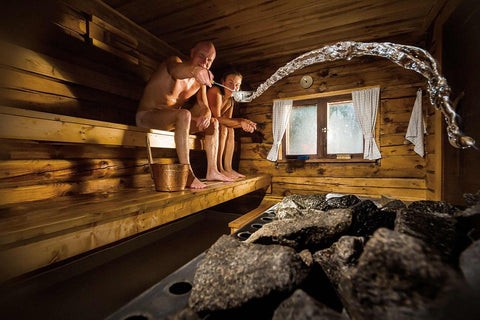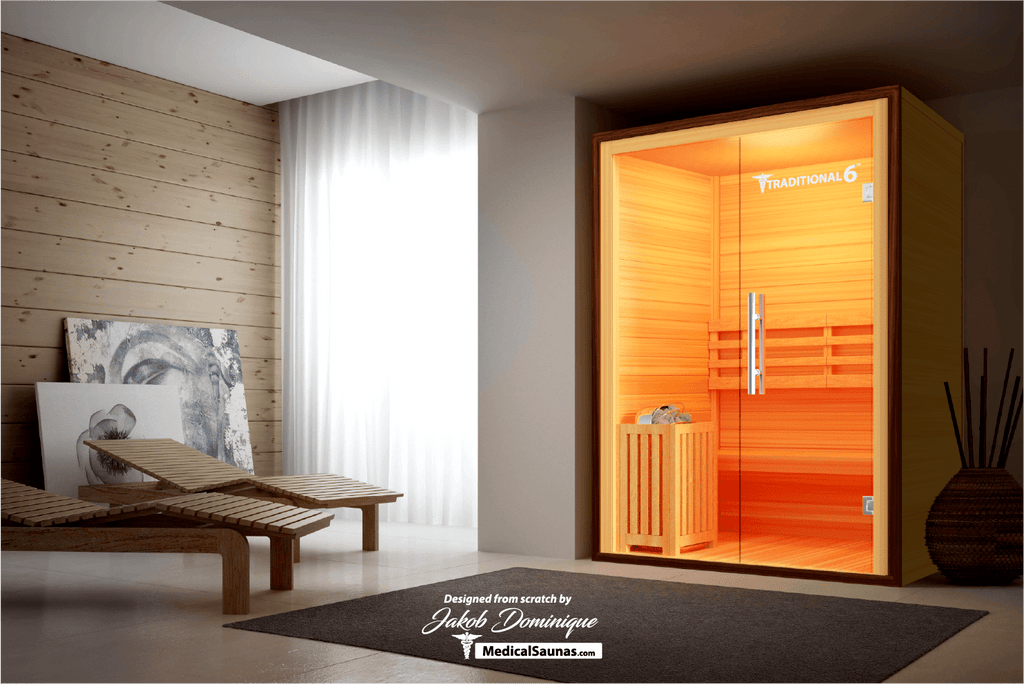Rumored Buzz on Traditional Sauna
Traditional Sauna Can Be Fun For Everyone
Table of ContentsGet This Report on Traditional SaunaFacts About Traditional Sauna UncoveredThe 5-Second Trick For Traditional SaunaThe Main Principles Of Traditional Sauna
A lot of the weight lost in a sauna is water loss and is re-gained upon rehydrating. Nevertheless, undoubtedly sauna can be a fundamental part of a healthy weight reduction program. To consider the distinctions between conventional and IR saunas, I will divide these into verifiable, academic, and produced distinctions.Thus, the best factor in the saunawhich goes to the ceiling directly over the sauna heateris typically in between 185 and 190 F. Traditional Sauna. Claims that a traditional sauna exceeds 200 F is merely not true and not suitable for electric saunas marketed in the US. The temperature level for a far-infrared sauna is typically established between 120 and 140 F; however, unlike the typical sauna, the goal in and IR area is not to attain a heat
As a result of this, the temperature level difference is practically unnecessary, since profuse sweating causes both sauna types, but the technique of heating up the body is different. In an IR sauna the bather will certainly feel warm and will certainly sweat a lot, but at a lot lower temperatures. Thus, if the objective is to spend longer amount of times in the sauna, the IR sauna is a good choice.

The Facts About Traditional Sauna Uncovered
When the high temperature is achieved, the aspects cycle on and off to maintain the high temperature. A lot of conventional sauna customers appreciate pouring water over the rocks to produce heavy steam to increase sauna humidity levels. The benefits of pouring water over the rocks include: making the space extra comfy, dampening the nasal flows, and enabling the usage of aromatherapy by blending essential oils with the water.
In a far-infrared sauna, the warm front penetrate the body to efficiently heat up the body and increase the body core temperature. To accomplish this increased temperature, Far-infrared emitters develop infrared power which is close to the very same wavelength as that which the body normally emitsoften described as the "Vital Range" of 7 to 14 microns), so the power is well obtained by the body.
When the energy gets in the body, it creates the body temperature level to boost and eventually results in perspiration. In an infrared sauna it is very important for the emitters/heaters to remain on practically regularly. Considering that there is no mass of rocks to keep warmth, the sauna will certainly cool down if the emitters closed off.
As pointed out above, the sauna bather in an infrared area intends to place himself in front of running emitters to obtain optimal benefit from the heat. The home heating time for both areas can be really various, depending upon how the areas are made use of. For a typical sauna, a bather must allow 30-40 mins for the room to achieve a wanted temperature and to effectively pre-heat the rocks.
Some Known Details About Traditional Sauna
A well created sauna will usually achieve a temperature of 150-160 F in about 30-40 minutes. For hotter temperature levels, the space might need to warmth for a longer duration.
To some, 15 minutes was "thrown away" while Look At This the infrared energy heated the wood panels rather than heating a body, while others discover a pre-heated space to be extra comfy and believe an elevated starting temperature is needed to start sweating. The length of recommended use for each space is about the exact same (10-15 mins per session); nonetheless, as a result of the reduced air temperatures and the ability to feel the effects of infrared heat faster than a traditional sauna, it is not uncommon for an individual to invest a total amount of 20-30 minutes in an infrared sauna.
Conventional saunas often tend to be bigger (hence use more power) than infrared saunas, although typical saunas are absolutely offered in one and two individual dimensions. For a two-person conventional sauna, 5x6 or 5x7 size is most preferred. The leading bench can pleasantly seat two or three people and is additionally enough time to rest during the sauna session.


The ordinary expense per kWH of electrical energy in the united state is roughly $0.11, so a 4.5 kW heater will cost about $.50 to compete one hour, if the heating unit runs constantly for one hour. Generally a sauna heating unit will run for 75% of the initial hour wikipedia reference and 50% of succeeding hours on given that the elements cycle once the established temperature level is achieved.
Not known Details About Traditional Sauna
A two individual far-infrared area is generally literally smaller sized than a typical sauna, usually regarding 4' x 4' or smaller sized. The IR heater is commonly 1.5-1.7 kW making use of a 120 volt 15 amp plug-in solution. Considering that the room can be used earlier than a sauna room, we will certainly think the room is made use of for to of an hour consisting of warmth up time.
There is a rarely discussed distinction in the social experience in between the 2 spaces. While our society has actually shed a few of the social benefit of the standard sauna experience, it can be really socially satisfying. From household time in the sauna, to heart-felt conversations with significant others, to sauna partiesthe conventional sauna experience can cause intimate socializing.
Many greater Related Site end infrared areas consist of colored light therapy, noise systems and full-glass fronts.